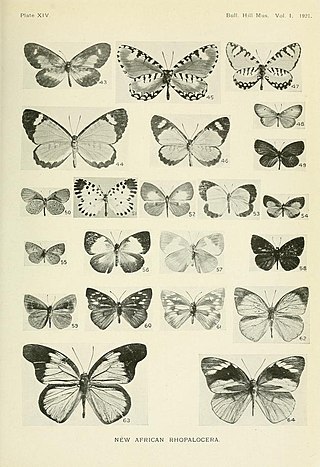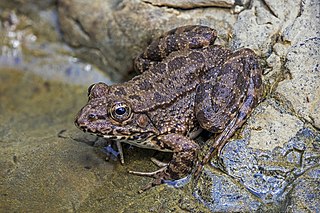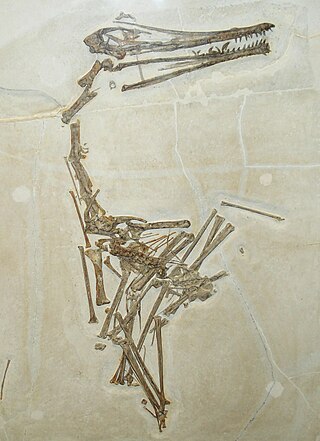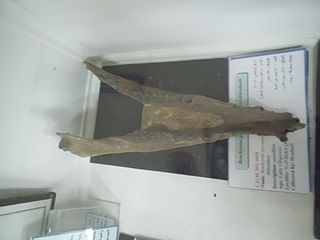
Keteleeria is a genus of three species of coniferous trees in the family Pinaceae first described as a genus in 1866.

Anthracotherium is an extinct genus of artiodactyls characterized by having 44 teeth, with five semi-crescentic cusps on the crowns of the upper molars. The genus ranged from the middle Eocene period until the early Miocene, having a distribution throughout Eurasia. Material subjectively assigned to Anthracotherium from Pakistan suggests the last species died out soon after the start of the Miocene.

Hyalinobatrachium is a genus of glass frogs, family Centrolenidae. They are widely distributed in the Americas, from tropical Mexico to southeastern Brazil and Argentina.
Anthracothema was a genus of extinct artiodactyl ungulate mammals that lived in Myanmar during the late Eocene.

Eresina is a genus of butterflies in the family Lycaenidae. The species of this genus are endemic to the Afrotropical realm.

Pelophylax is a genus of true frogs widespread in Eurasia, with a few species ranging into northern Africa. This genus was erected by Leopold Fitzinger in 1843 to accommodate the green frogs of the Old World, which he considered distinct from the brown pond frogs of Carl Linnaeus' genus Rana.

Grillotius is a genus of moths of the family Sphingidae, containing only one species, Grillotius bergeri, which is known from Gabon, the Republic of the Congo and the Democratic Republic of the Congo.

Tillandsia bergeri is a species of plant in the genus Tillandsia. This species is native to Brazil.
B. tinctoria may refer to:

Chrysothrix is a genus of lichen-forming fungi in the family Chrysothricaceae. They are commonly called gold dust lichens or sulfur dust lichens, because they are bright yellow to greenish-yellow, sometimes flecked with orange, and composed entirely of powdery soredia. Apothecia are never present in North American specimens.

Exelastis is a genus of moths in the family Pterophoridae.
Semiclivina is a genus of beetles in the family Carabidae, containing the following species:

Ardeadactylus is an extinct genus of ctenochasmatoid pterosaur known from the Late Jurassic Solnhofen limestone of Bavaria, southern Germany. It contains a single species, Ardeadactylus longicollum, which was originally thought to be a species of Pterodactylus, as P. longicollum.

Phiala is a genus of moths in the family Eupterotidae.
Nonyma is a genus of longhorn beetles of the subfamily Lamiinae, containing the following species:

Brachyodus was a genus of anthracothere that lived in Europe during the Early Miocene.

Erjavecia is a monotypic genus of gastropods belonging to the family Clausiliidae. The only species is Erjavecia bergeri.
Chrysothrix bergeri is a species of crustose lichen in the family Chrysotrichaceae. It is found in the southeastern United States and the Caribbean, where it grows as a bright yellow, powdery crust on the bark and wood of mostly hardwoods.

The anthracotheriines are an extinct subfamily of anthracotheres that comprised Paleogene to early Neogene North American and Eurasian artiodactyls. The group contained the genera Anthracotherium, Heptacodon, and Paenanthracotherium, as well as possibly Myaingtherium and Siamotherium. They were small to large sized anthracotheres, and when compared to the other two subfamilies, Microbunodontinae and Bothriodontinae, anthracotheriines are found to occupy a primitive, basal position in the family.













